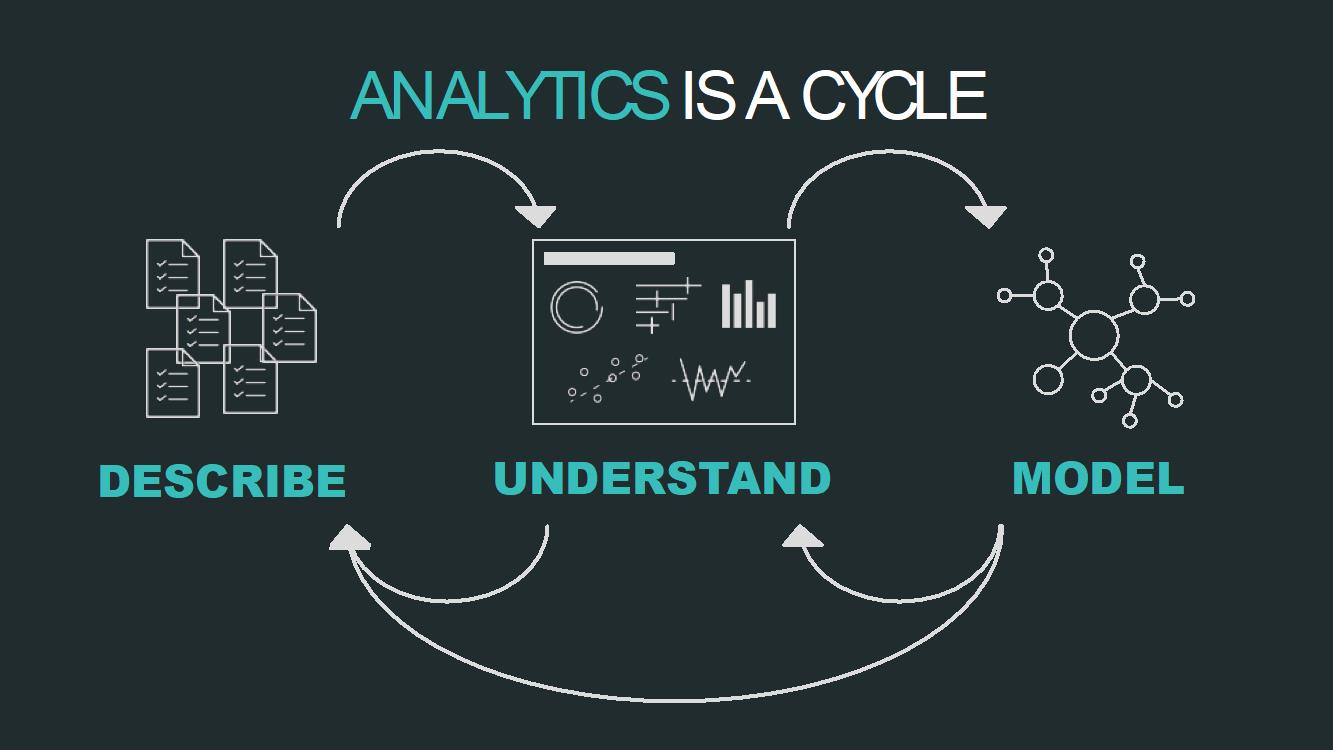This series unpacks the different types of analytics that exist and the best applications for each. Understanding these distinct varieties better equips us to operate successfully in the analytics space and navigate its cyclical nature effectively.
Models are amazing. Built upon the understanding we gained in type 2 analytics, models provide an amazing tool that we can pass to others. No longer is the understanding locked up in our minds, but it becomes a concrete reality we can use to further test and refine our understanding. Not only that, but models are the key to making predictions, optimizing our business and automating processes. They can often replace custom programming, helping us to create better user experiences.
When you start out with modeling, you’re looking to answer questions like:
- What will sales be next month?
- What is the best way to spend our marketing budget?
- What products should we recommend to customers?
- What does a hot dog look like?
- How do I get from A to B?
If you want an interesting (and non-technical) introduction to the power of models, I highly recommend Nate Silvers’ book The Signal and the Noise. For me, an important takeaway from the book is that there’s a ton of value in consistently applying simple modeling techniques throughout your organization. You can start with the tools you have now on your desktop, like Excel or Tableau. The important thing to understand is that simple insights can provide profound results, or as is often said, “All models are wrong, but some are useful.”

Building Practical Models
Usefulness is a key factor to keep in mind when building models. Often, people will prioritize accuracy, thinking that the most accurate model is the best. Consider the example of customer churn. Understanding why customers unsubscribe from your service is extremely important to a company’s revenue. If we produce a model for customer churn, we can predict which customers are “at risk” and intervene to keep them.
This is a very real business problem with real costs. It costs us money to intervene (either by making preemptive calls or offering discounts), but it costs us even more to lose a customer. From a business perspective, we’d prefer to intervene than risk losing another customer. Thus, our model should lean towards overpredicting who will unsubscribe. Strictly speaking, this is a less accurate model, but it’s certainly more useful. The key in this type of analytics is understanding that use and optimizing for that.
In the past, building models meant doing it by hand. Analysts would write out logic and create mathematical formulas. This is still a good place to start, but it tends to mean that models are simplified to the extreme or reserved for the highest value targets. Today, however, machine learning has revolutionized our ability to create models and made them more widely accessible while opening up all kinds of new use cases. By feeding data to machine-learning algorithms, we are able to create better models than ever before, resulting in more human-like behavior from our programs (i.e. artificial intelligence).
Machine Learning and Artificial Intelligence
These terms have certainly been overhyped. The machines aren’t even close to an uprising. They are, however, making us better. They help us fly airplanes, drive cars, read x-rays, shop online, sort through text, organize photos and perform countless other tasks.
Machine learning is quietly becoming part of what we do on a day-to-day basis, and it should become part of what you do as a company. To be clear, too often clients want to begin with the latest and greatest in machine learning when much simpler techniques will provide quicker value. Start off simply and focus on value.
Maturity of Analytics Type 3
This type is innovating rapidly, so maturity will be a moving target. However, three key areas we look at are:
- The ability for models to go from the lab to production
- How widespread the process of creating models has become across the organization
- The methods used to optimize and test models
Analytics Isn’t Linear
“Wait a minute,” you reasonably object, “I thought that analytics wasn’t linear, yet we just went through type 1, 2 and 3 in order!” You’re right; we’ve talked about analytics up until this point as though it’s a clean progression from type 1 to type 3. It’s true that each type does build upon the previous (you can’t skip steps), but it’s not a direct path. The reality of analytics is much messier.

Analytics Is a Cycle
Analytics is a back-and-forth cycle. As you begin to understand the world in type 2, you develop more questions, which requires us to gather more data (type 1). As we build models, we can apply those models to better test our understanding (type 2). You can even use models to help you better describe the world in type 1 (see market segmentation). You don’t move on from a type but return to it over and over again to further refine it. As we continue to evolve and adapt, so do the data practices and processes we use. Everything is a cycle of continual growth and improvement.


